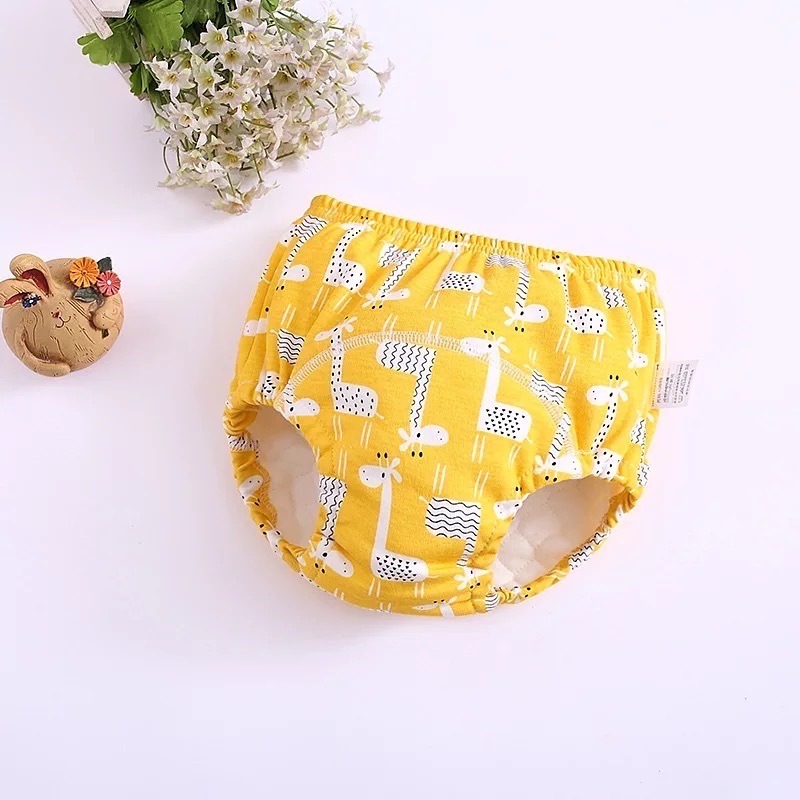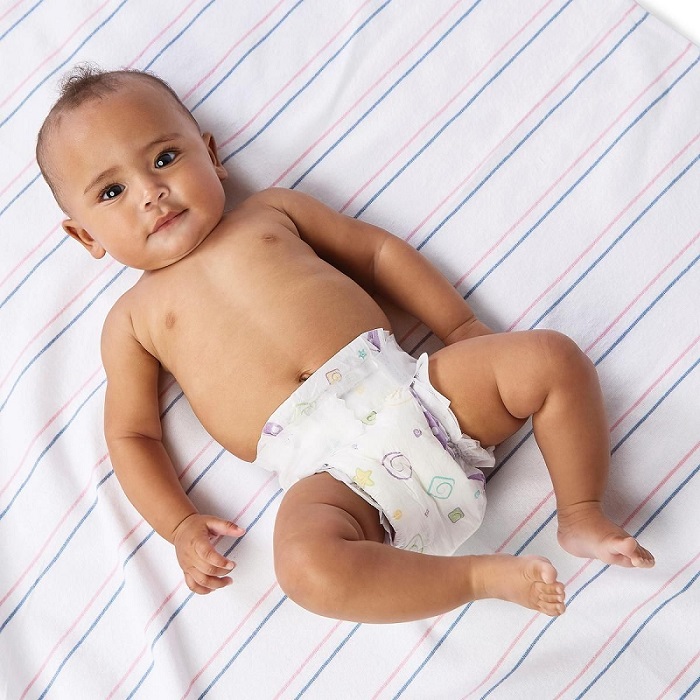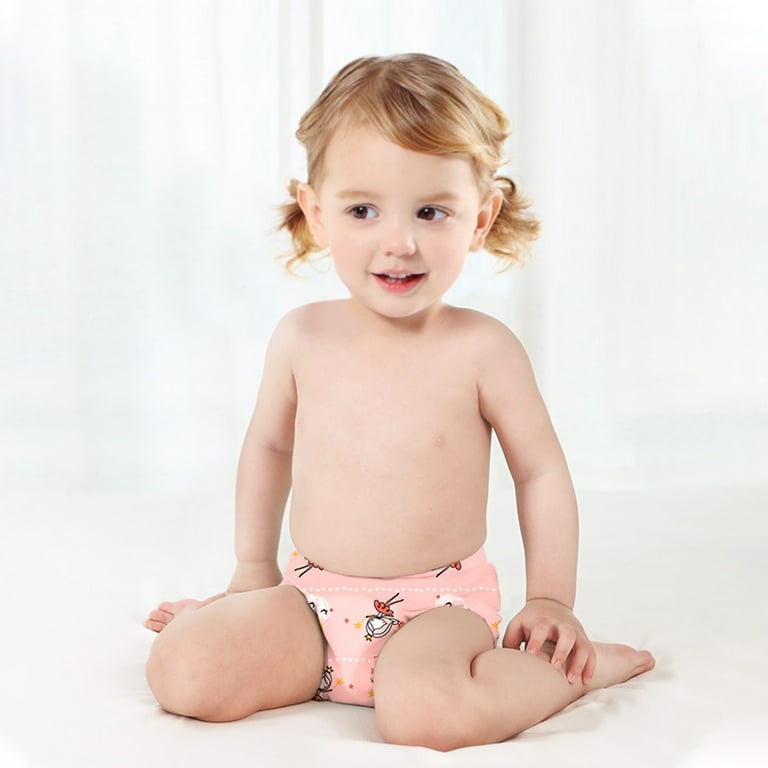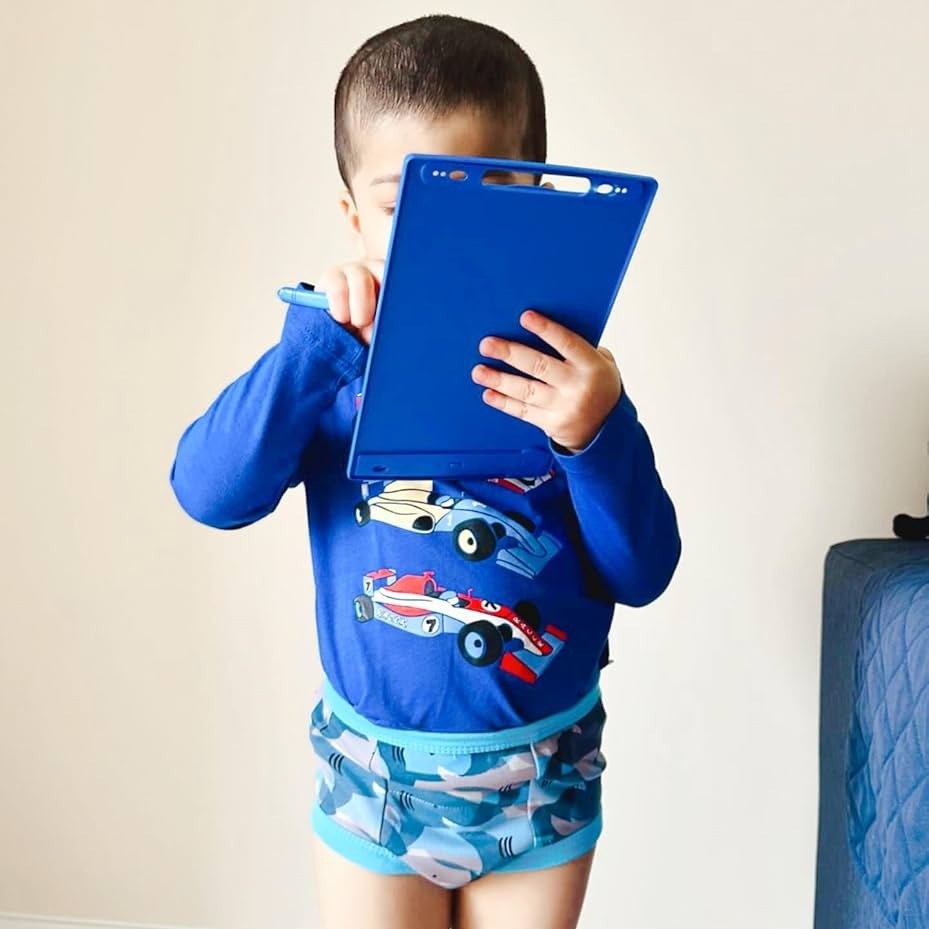What Are Potty Training Pants?
As your child grows, potty training pants become key. They bridge the gap between diapers and underwear. Designed for toddlers learning to use the toilet, these pants help make the process easier. They pull up and down smoothly, allowing kids to handle bathroom trips independently. They come in both reusable and disposable forms. They’re like big kid underwear but with some diaper benefits.
The Role of Potty Training Pants in Toilet Training
Potty training pants are more than just transitional clothing; they’re tools for learning. Unlike diapers, they allow toddlers to feel wetness. This helps them connect the need to pee with the sensation of being wet. As they’re less absorbent than diapers, they also teach consequences of accidents, pushing kids towards staying dry.
Comparing Absorbency: Training Pants vs. Regular Nappies
Regular nappies soak up a lot, keeping your child dry. Training pants, on the other hand, absorb less. This lesser absorbency is key for potty training. It ensures toddlers notice when they’re wet, which doesn’t happen with normal diapers. The goal is not to stay dry but to learn and transition to underwear gradually.
Benefits of Potty Training Pants

When you decide to move your toddler from diapers to potty training pants, you’re unlocking multiple benefits. These benefits not only support your toddler’s growth but also ease the toilet training process for both of you.
Encouraging Independence in Toddlers
They are a brilliant tool for promoting self-reliance. Toddlers can easily pull them up and down, making them feel in control. This boosts their confidence to use the potty alone.
The Transition from Diapers to Real Underwear
Seamlessly, potty training pants bridge the gap from diapers to underwear. They’re less absorbent, teaching kids the link between being wet and needing the toilet. This gears toddlers up for regular underwear use.
Nighttime Use: Advantages for Sleep Training
For sleeping times, some of them offer extra protection. This helps prevent bed-wetting, while still being comfortable for the little ones to sleep in.
Comfort Considerations for Your Toddler
Comfort is key, and these pants often offer a softer and less bulky alternative to diapers. Toddlers can move freely and comfortably, which is essential as they’re always on the go.
Potty Training Challenges
Navigating potty training can come with a few hurdles. One size doesn’t fit all when it comes to potty training pants. Acknowledge each child’s unique path to readiness.
Recognizing Individual Differences in Potty Training Readiness
Kids are unique. They show signs of potty training readiness at different times. Look for cues like discomfort with wet diapers or interest in using the toilet. These signals suggest it might be time to try potty training pants. Patience is important, as some children take longer to adapt.
When to Prefer Pull-Ups Over Training Pants
Pull-ups and potty training pants have distinct uses. Choose pull-ups for children who aren’t quite ready for less absorbent options. They’re more like diapers, which can be helpful for younger toddlers or for overnight protection. They are better for those closer to using regular underwear. Use them to teach about wetness and using the potty. Going out? Pull-ups can provide extra security to avoid accidents.
Key Differences Between Pull-Ups and Potty Training Pants

Understanding the main distinctions between pull-ups and potty training pants can guide you in selecting the right option for your little one. Let’s focus on two essential factors that differentiate them: the absorbency levels and how they contribute to the potty training process.
Absorbency Levels and Potty Training Efficacy
Pull-ups are much like regular diapers in their ability to keep your toddler dry. They absorb a lot, reducing messes and leaks. This is great for certain situations, like nighttime or outings. However, this high level of absorbency might slow down the potty training progress. Since your child might not feel wet, they won’t learn the link between the sensation of needing to go and the physical consequence of an accident.
They are less absorbent on purpose. They allow a toddler to feel the discomfort of being wet, promoting a quicker understanding of bladder control. Feeling wet is a crucial learning signal. It tells your child, ‘It’s time to go to the potty!’. With lower absorbency, potty training pants support this important learning curve.
By considering these key differences, you can better decide when and how to use each type of pant effectively during your toddler’s potty training. Whether you choose pull-ups for certain occasions or stick with potty training pants for consistent learning, the goal is the same: moving your child closer to using regular underwear confidently and independently.
How to Introduce and Use Training Pants
Transitioning your toddler to potty training pants is a pivotal step. Here’s a simple guide to introduce them effectively.
Establishing a Routine
Start with a consistent routine to integrate potty training pants into your child’s life. Introduce them as “big kid” underwear. Explain their use and show excitement about this new phase. Consistency is key, so try using them during the day, especially after waking up or before playtime. A routine helps toddlers know what to expect and when to try using the potty.
The Importance of Encouragement and Praise
Positive reinforcement makes a huge difference in potty training. Celebrate every small victory, whether your child successfully uses the potty or simply remembers to pull their pants up and down. Praise helps build confidence and reinforces the behavior you want to see. Stickers, an extra story at bedtime, or a dance party can celebrate these wins. Remember, every child progresses at their own pace, so be patient and keep the encouragement coming.
The Right Age for Transitioning to Potty Training Pants
Determining the right time to switch to potty training pants is crucial. The ideal age varies from child to child, typically between 18 and 30 months. Watch for signs of readiness, such as showing interest in the bathroom or discomfort with wet diapers. These cues can signal it’s time to start the transition.
Identifying Readiness in Your Child
Each child’s readiness for potty training pants is unique. Look for clear signs, like being able to indicate when they’re wet or soiled. Your child might start expressing desire to use the potty or showing fascination with others’ bathroom habits. Able to follow simple instructions and pull pants up and down? These are strong indicators that your child may be ready for potty training pants. Patience is key during this period, as children may take longer to show these signs.
Managing Potty Training Pants Supplies
As you embark on the potty training journey with your toddler, managing supplies of potty training pants becomes essential.
How Many to Buy and Rotation Strategies
Determining the right amount of potty training pants to purchase hinges on your child’s pace of potty training and your own laundry schedule. A good starting point is to have about 6-8 pairs of reusable training pants. This ensures you have fresh ones available as others are being washed.
Creating a rotation strategy is key. Use clean pairs while soiled ones soak or dry after washing. This cycle keeps a continuous supply on hand without excess. Remember, they wear out with time. Plan to buy new ones as needed, especially as your child grows or if pants show signs of wear.
Make sure to store them conveniently. Keep a few pairs in your bathroom and some in your go-bag for outings. Accessibility encourages your child to be involved in the process by choosing and pulling on their pants independently. It also makes potty breaks faster and less of a hassle when you are away from home.
In conclusion, buying the right number of potty training pants and establishing a rotation system simplifies life for both you and your toddler during this phase. By planning and organizing your supplies, you help create a stress-free environment conducive to successful potty training.
Cleaning and Maintenance

Proper care is crucial for your reusable potty training pants. It ensures hygiene and long-term use.
Tips for Washing Reusable Potty Training Pants
Washing reusable potty training pants is not hard. Here are simple steps to follow:
- Rinse soiled training pants soon after use. This reduces stain and odor buildup.
- Pre-wash or soak if the pants are heavily soiled. This loosens waste before a full wash.
- Wash with your regular laundry. Use a normal cycle for best results.
- Avoid fabric softeners. They can reduce absorbency over time.
- Wash with similar colors. This keeps the colors bright and avoids dye transfer.
Remember these tips to keep potty training pants clean and effective.
Drying Techniques to Prolong Life and Maintain Quality
Drying your training pants correctly is just as important as washing them:
- Air-dry outside if possible. Sunlight naturally bleaches and disinfects.
- Avoid high heat from dryers. It can damage the fabric and affect absorbency.
- Turn pants inside out. It helps them dry faster.
Using these drying techniques will help your potty training pants last longer. They will keep looking and feeling great for your toddler.
Conclusion
Embarking on the journey of potty training can be a transformative experience for your toddler. With the aid of potty training pants, this crucial developmental milestone can be both comfortable and encouraging. These training aids serve as an invaluable part of the learning process, bridging the gap between diapers and regular underwear.
Embracing the Potty Training Journey with the Right Tools
Choosing the right tools, such as potty training pants, can significantly ease the transition for parents and toddlers. Here is a quick recap to ensure you’re well-prepared for this adventure:
- Understand Their Purpose: Recognize that potty training pants are designed to help toddlers feel wetness and encourage them to use the potty.
- Foster Independence: Enable your child to pull pants up and down easily, boosting their confidence and self-reliance.
- Nighttime Protection: Use pants with extra absorbency at night to prevent bedwetting while still providing comfort.
- Comfort Is Key: Opt for soft, less bulky pants that allow for free movement. Comfort helps toddlers move on to regular underwear quicker.
- Watch for Readiness Signs: Each child is different. Look for cues like discomfort with diapers or curiosity about the toilet.
- Manage Supplies: Have enough potty training pants to avoid shortages but not so many that they’re wasted.
- Careful Cleaning: Proper washing and drying will prolong the life of reusable training pants and maintain their quality.
Remember, while potty training is a universal stage, each child’s journey is unique. Be patient, offer praise, and use the right tools like potty training pants to support your child every step of the way. Here’s to celebrating this leap towards bigger-kid status!




